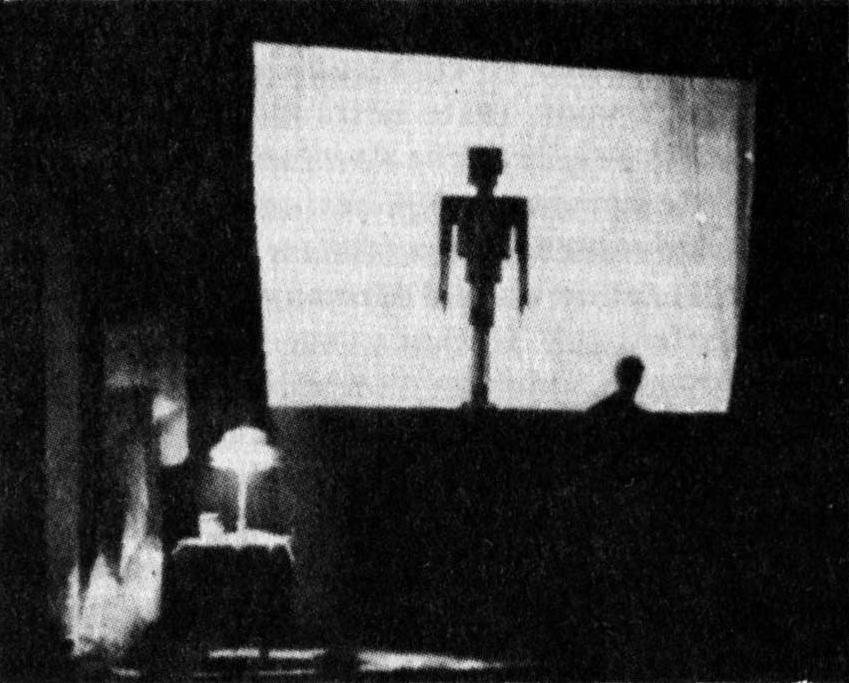Iets met rechte lijnen en vlakken en primaire kleuren. Zo ver komen we allemaal nog wel met De Stijl. Maar wist u dat er ook Stijl-muziek bestond en dat daar een mechanische figuur bij, eh, Stijl-danste? Even de zaken op een rijtje voor het Mondriaan to Dutch Design-tentoonstellingenseizoen begint.
1. Mondriaan was niet de grote man van De Stijl
Piet Mondriaan is de beroemdste Stijl-kunstenaar. Bekend van de appelboom die steeds abstracter werd en veel later zijn jazzy Victory Boogie Woogie geldt hij als het boegbeeld van de beweging. Maar De Stijl was eigenlijk geen stroming, maar een tijdschrift dat bestond van 1917 tot 1928. De appelbomen zijn van daarvoor en de Victory van erna.
En de centrale figuur in De Stijl was niet Mondriaan, maar Theo van Doesburg. Doesburg regelde alles, soms op het dictatoriale af. Mondriaan was wel een belangrijk lid, net als Vilmos Huszár, J.J.P. Oud, Bart van der Leck, Jan Wils, Robert van ’t Hoff, Georges Vantongerloo en Gerrit Rietveld.
2. Mondriaan en Rietveld hebben elkaar nooit ontmoet
Van Doesburg coördineerde het tijdschrift en pretendeerde dat De Stijl een hechte groep was. In werkelijkheid had iedereen sterke eigen meningen en hebben verschillende prominenten elkaar nooit ontmoet.
3. Bijna niemand hield zich aan de primaire kleuren
De Stijl had artistieke principes vastgelegd. Zo moest kunst uit elementaire vormen bestaan, asymmetrisch zijn en alleen in primaire kleuren en grijs/zwart worden gemaakt. Dat deed niet iedereen, ook Van Doesburg zelf niet. Om de schijn van eenheid op te houden kleurde Van Doesburg later zwart-witreproducties van anders gekleurde kunstwerken bij in primaire kleuren.
4. De Rietveldstoel was ongekleurd
De eerste versie van de beroemde de Rood-blauwe stoel van Gerrit Rietveld was niet rood-zwart-blauw-geel, zoals wij hem kennen, maar van onbeschilderd donker hout. Veel kunstenaars, onder wie Paul Citroen, Charley Toorop en dichteres Til Brugman bestelden stoelen van Rietveld met alternatieve kleuren als wit of zeegroen. Pas in 1923 kreeg de Rietveldstoel zijn bekende Stijl-kleuren.
5. Gerrit Rietveld was communist
En ook Huszár, Wils en Van ’t Hoff hingen communistische idealen aan. Andere leden wilden juist niets met politiek te maken hebben.
6. De Stijl omvatte ook muziek, literatuur en dans
Vilmos Huszár ontwierp een mechanisch dansende figuur. Die is verloren gegaan, maar een kopie ervan staat in het Gemeentemuseum Den Haag. Componist Jacob van Domselaer probeerde de abstractie van de Stijl-kunst in muziek te vangen. Van Doesburgs vrouw Nelly speelde onder de naam Pétro van Doesburg deze muziek op de piano. Dat gebeurde in sessies die beïnvloed waren door het absurdisme van de dada-beweging. Dadaïsten als Kurt Schwitters publiceerden ook vaak poëzie in het tijdschrift.

7. De Stijl telde één vrouw
Die ene vrouw was niet Nelly, maar Truus Schröder-Schräder. Zij was later de opdrachtgever voor het Rietveld-Schröderhuis in Utrecht, waar de Stijlkenmerken zowel in de architectuur als in het interieur zijn doorgevoerd.
8. Mies van der Rohe was beïnvloed door De Stijl
Architect Ludwig Mies van der Rohe ging in zijn werk vaak uit van Stijl-principes. Omgekeerd was De Stijl zelf beïnvloed door de architectuur van H.P. Berlage. Jan Wils en J.J.P. Oud hadden allebei contact met hem, jaren voordat Wils de Papaverhof in Den Haag ontwierp en Oud café De Unie in Rotterdam.
9. Louis Andriessen eert De Stijl in een opera
Louis Andriessen schreef in de jaren tachtig een opera genaamd De Materie. Het derde bedrijf van die opera heet De Stijl. De structuur is gebaseerd op Mondriaans Compositie met rood, geel en blauw.
10. Leiden eert Van Doesburg in het plaveisel, Den Haag op het stadhuis
Voor de deur van Van Doesburgs vroegere atelier aan het Kort Galgewater 3 in Leiden is het beeldmerk van De Stijl in sierbestrating uitgevoerd. In 2009 plaatste Leiden tijdelijk een nooit uitgevoerd fonteinontwerp van Van Doesburg op het Stationsplein: Vierkant in Vierkant. Leiden heeft nog een ander kunstwerk dat aan De Stijl doet denken: De twee kwadraten van El Lissitzky op de voormalige meelfabriek. Lissitzky was officieel echter geen Stijl-lid.
In het huidige Stijl-jaar zijn enkele gevels van het Haagse stadhuis in Mondriaankleuren overgespoten. Lees meer over de citydressing van Den Haag en hoe het Gemeentemuseum daar tegenaan kijkt.

